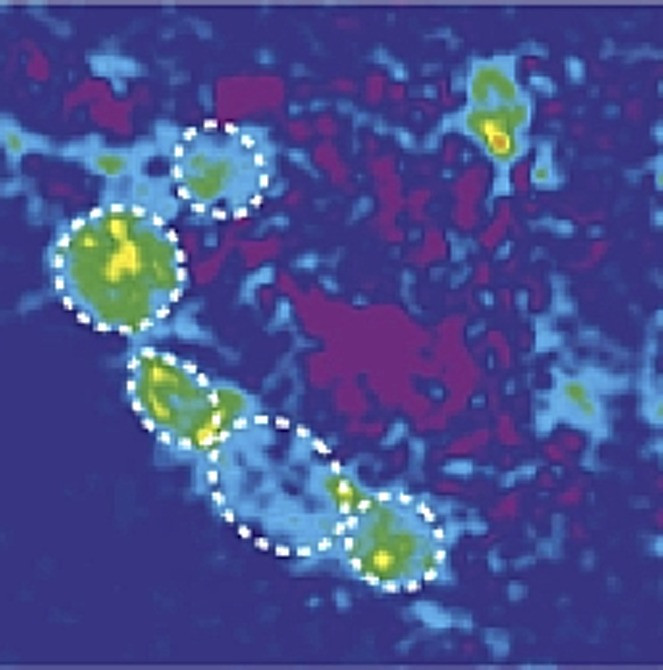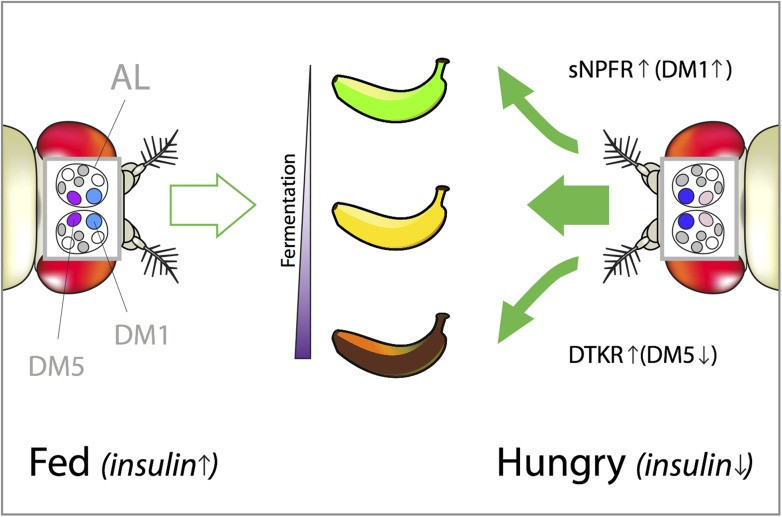It’s a common saying: “You catch more flies with honey than vinegar.” But when it comes to fruit flies (Drosophila melanogaster), the reality is more nuanced, especially when hunger enters the equation. These tiny insects are often found buzzing around overripe fruit, drawn by the pungent aroma of acetic acid – the very compound that gives vinegar its distinctive smell. But Do Flies Like Vinegar in all situations? The answer, as revealed by fascinating research, is not a simple yes or no.
Initially, fruit flies seem indifferent to both weak and strong concentrations of vinegar. Low levels suggest fruit that isn’t ripe enough, while high levels might indicate spoilage. This selective attraction is crucial for their survival, guiding them to the perfect food source: fermenting fruit teeming with microbes. However, a groundbreaking study by Jing Wang and colleagues delves into how a fly’s internal state, specifically hunger, dramatically alters its perception of vinegar, expanding the range of concentrations that become appealing. This research, published in eLife, unveils the intricate brain mechanisms that answer the question: do flies like vinegar, and more importantly, when and why?
 graphic file with name elife10535inf001.jpg
graphic file with name elife10535inf001.jpg
Unraveling the Olfactory Puzzle: DM1 and DM5 Glomeruli
To understand why flies might like vinegar under certain conditions, we need to explore their sophisticated sense of smell. Like humans and other animals, fruit flies rely on olfactory neurons to detect volatile chemicals. These neurons connect to specific clusters in the brain called glomeruli. For vinegar, concentrations activate about 6-8 glomeruli out of roughly 40 in a fly’s brain. Intriguingly, a previous study highlighted a single glomerulus, DM1, as the primary driver of attraction to vinegar. When DM1 receptors were disabled, flies ignored vinegar entirely. Conversely, activating DM1 in flies with a diminished sense of smell was enough to lure them to vinegar.
However, higher vinegar concentrations introduce another glomerulus into the mix: DM5. DM5 activity alone can explain why flies avoid very strong vinegar odors. It’s the balance between DM1 and DM5 – activated at different vinegar concentrations – that seems to dictate whether a fly approaches or avoids a potential food source. This delicate interplay is key to understanding when flies like vinegar and when they don’t.
Hunger’s Influence: Changing the Vinegar Preference
Hunger has a profound effect on animal behavior, and fruit flies are no exception. Starved flies are significantly quicker at locating even a tiny amount of vinegar-infused food compared to well-fed flies. Insulin levels play a crucial role in this shift. When flies are starved, insulin levels drop, triggering a cascade of events that ultimately boost the expression of a specific receptor protein in DM1 olfactory neurons. This receptor detects a signaling molecule called short neuropeptide F (sNPF). Upon binding, sNPF amplifies DM1 activity, essentially increasing the fly’s sensitivity to attractive vinegar odors. This mechanism initially seemed to provide a neat explanation for why hungry flies like vinegar more.
Beyond sNPF: The Role of Tachykinin and DTKR
But the story doesn’t end there. Ko et al.’s more recent research reveals that the sNPF mechanism only explains the increased attraction to low vinegar concentrations in hungry flies. At higher concentrations, starved flies still show a stronger preference for vinegary food than fed flies, even when sNPF signaling is reduced. This suggests another hunger signal is at play.
Searching for this missing piece, the researchers identified the Tachykinin receptor (DTKR) as a prime candidate. DTKR was known to dampen olfactory neuron responses. Further investigation confirmed its role: reducing DTKR levels diminished food-seeking behavior in hungry flies exposed to high vinegar concentrations, but not low ones. Similarly, DM5, the glomerulus responsible for vinegar avoidance at high concentrations, was less active in starved flies. However, when DTKR was suppressed, DM5 activity in starved flies returned to levels seen in fed flies. Insulin was again identified as the upstream signal influencing DTKR in starved flies.
 Figure 1.Drosophila. This visual representation clarifies why flies may like vinegar more when hungry, showcasing the dual neuropeptide system at play.
Figure 1.Drosophila. This visual representation clarifies why flies may like vinegar more when hungry, showcasing the dual neuropeptide system at play.
A Dual Neuropeptide System: The Full Picture
The research paints a compelling picture of how hunger modulates a fruit fly’s attraction to vinegar. When a fly is starved and insulin levels decline, two complementary neuropeptide systems are activated. One system, involving sNPF, enhances signal transmission at DM1, making the fly more sensitive to appealing food odors, including lower concentrations of vinegar. Simultaneously, the other system, involving Tachykinin and DTKR, reduces signal transmission at DM5. This dampens the avoidance response to normally unpleasant or aversive smells, such as high concentrations of vinegar.
Together, these parallel pathways enable hungry flies to pursue less-than-ideal food sources, including fruit with both low and high vinegar concentrations, ensuring survival during times of scarcity. This sophisticated olfactory recalibration driven by hunger provides a comprehensive answer to why and when flies like vinegar, demonstrating remarkable adaptability in their foraging behavior.
Implications Beyond Flies: Sensory Processing in Animals
This study underscores the fruit fly as a powerful model for understanding how the brain processes sensory information. Using a combination of behavioral experiments, genetic manipulation, and brain imaging, researchers have elucidated how a crucial sensory cue like vinegar is interpreted differently based on an animal’s internal state. The principles uncovered in flies often hold true, at least in broad strokes, for other animal species, potentially including humans. This area of research is now poised to contribute fundamental insights into sensory processing applicable across the animal kingdom, shedding light on how internal states like hunger can profoundly shape our perception of the world around us, and ultimately, influencing our choices, even when it comes to something as basic as whether we, or flies, like vinegar.
References
Ko KI, Root CM, Lindsay SA, Zaninovich OA, Shepherd AK, Wasserman SA, Kim SM, Wang JW. 2015. Starvation promotes concerted modulation of appetitive olfactory behavior via parallel neuromodulatory circuits. eLife 4:e08298. doi: 10.7554/eLife.08298
Semmelhack JL, Wang JW. 2009. Selectivity and sensitivity in odour coding by Drosophila antennal lobe circuits. Nature 459:218–23. doi: 10.1038/nature07981.
Root CM, Ko KI, Jafari A, Wang JW. 2011. Presynaptic and postsynaptic mechanisms mediate olfactory plasticity and behavioral change in hunger. Neuron 72:311–23. doi: 10.1016/j.neuron.2011.08.026.
Ignell R, Rohwedder A, Sachse S. 2009. Sensory neuron subtypes are defined by their intraclass dendritic divergence and differential tuning to food-related odours in Drosophila. Frontiers in Neuroscience. doi: 10.3389/neuro.01.003.2009.